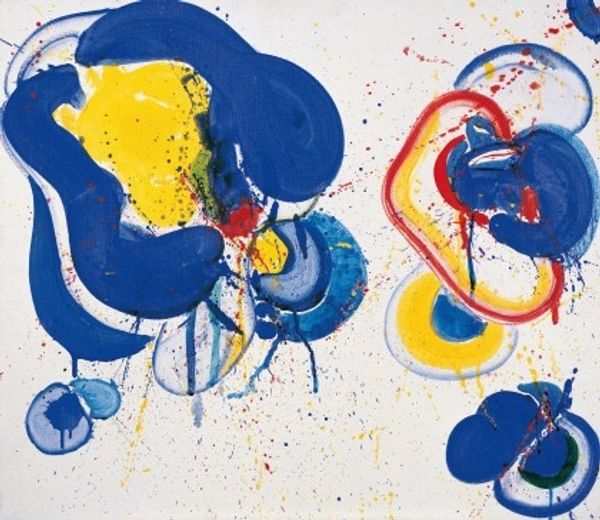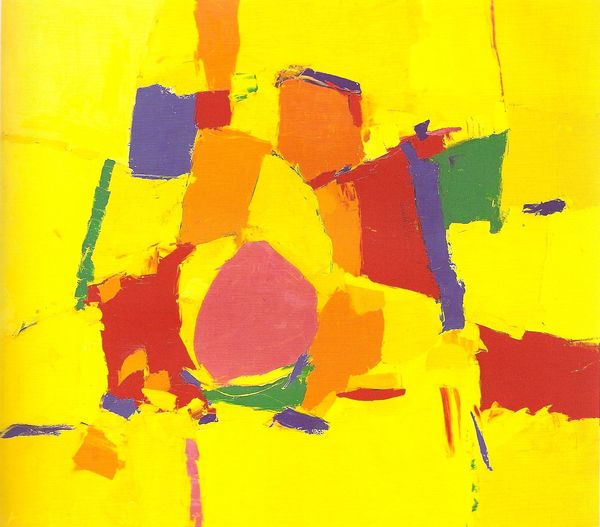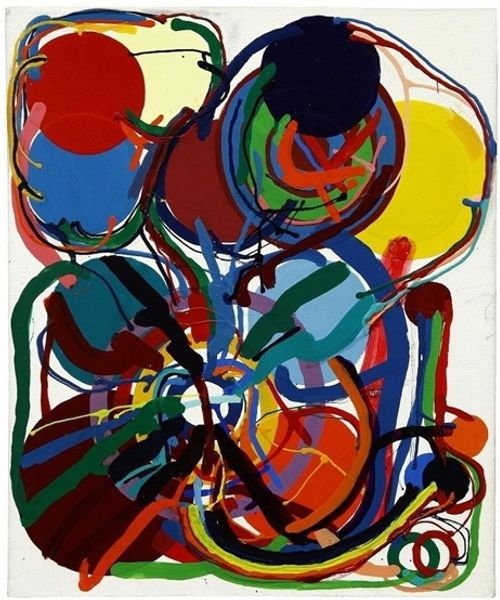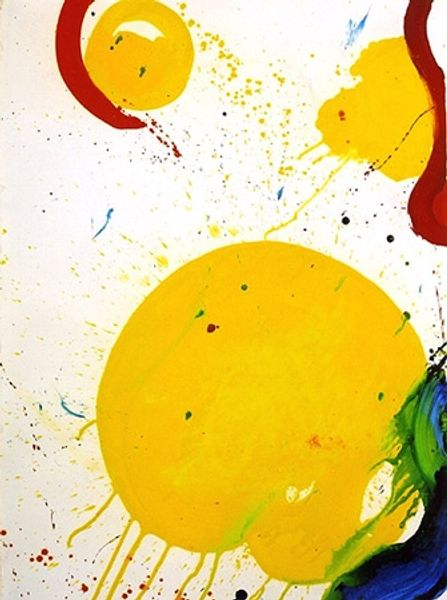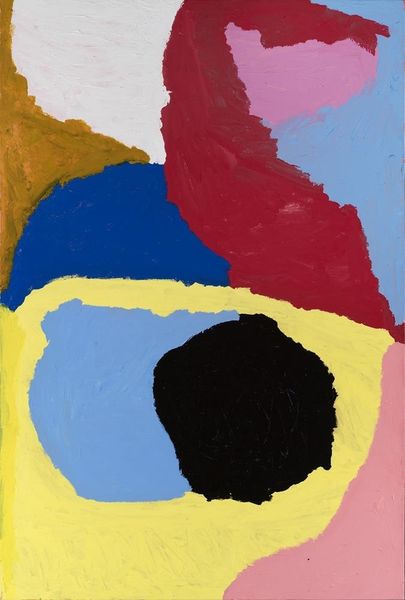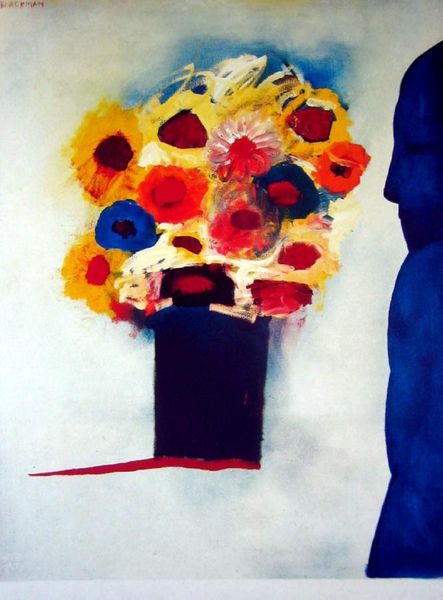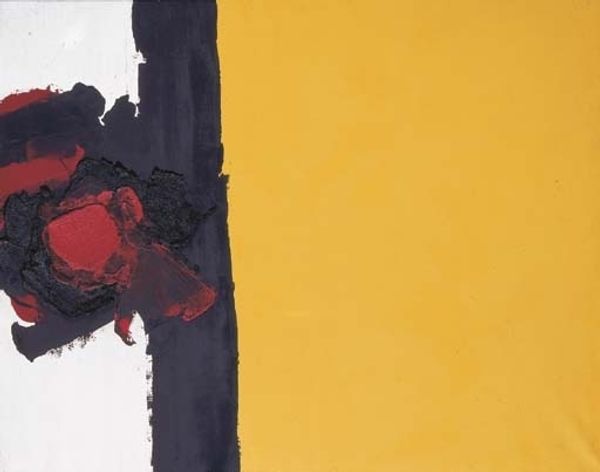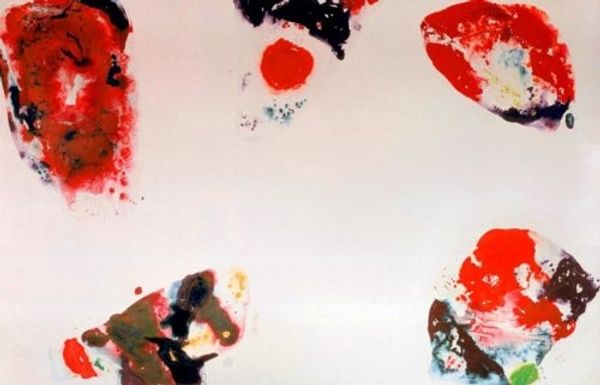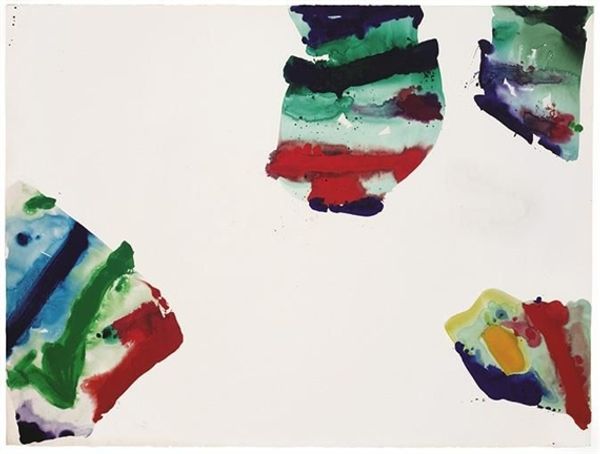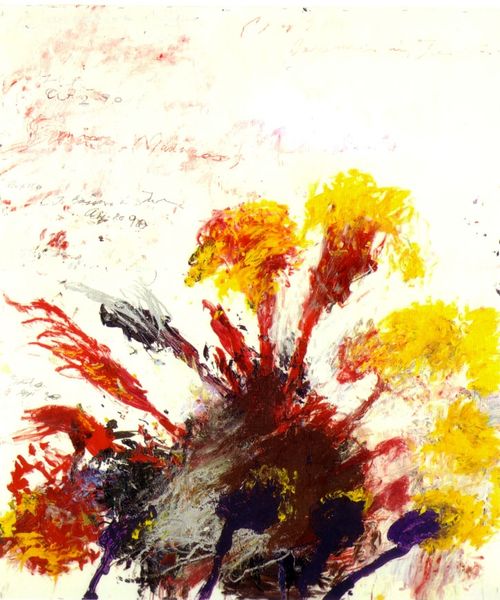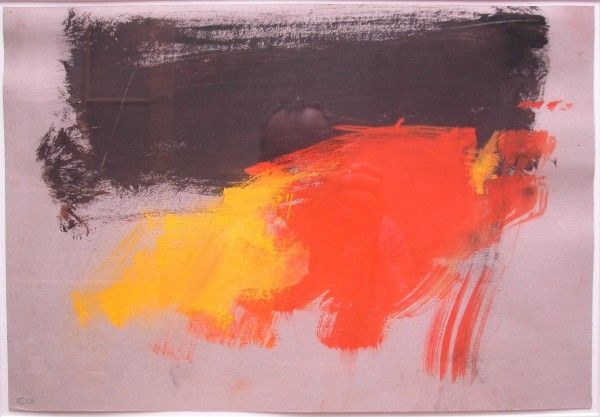
painting, acrylic-paint
#
abstract-expressionism
#
non-objective-art
#
painting
#
acrylic-paint
#
form
#
acrylic on canvas
#
abstraction
#
modernism
Copyright: Luis Feito,Fair Use
Curator: Immediately, I'm struck by the primal quality of this artwork, how it embodies this pure gestural approach. Editor: It is indeed striking. What we are looking at is titled "Composition," by Luis Feito, crafted in 1965 using acrylic paint. Feito was a key figure in the Spanish abstract expressionist movement. Curator: And look at the central motif—the convergence of black, red, and yellow. It echoes alchemical symbolism, maybe the union of opposing elements or perhaps something even deeper: fire, earth, void. Editor: That's interesting because Feito himself went through an intellectual awakening questioning the very notions of identity and purpose as Spain shifted under Franco. I think of modernism’s quest for purity but filtered through this historical anxiety specific to Feito. There are so many historical and cultural references to deconstruct. Curator: But that quest you speak of becomes almost violent, you know? Each brushstroke acts almost like a character and the thick layering builds emotional density, but also reflects social concerns present at the time, but with more abstract universal meaning. It all connects in this tense, dynamic configuration. Editor: Certainly. Feito was painting against the backdrop of Spain's internal struggle during the mid-20th century, and you have to interpret everything through that lens. We must not underestimate abstraction’s capacity to voice dissent through color and form during times of suppression. Curator: That resonates deeply. I think Feito isn't only engaging with abstraction. It’s clear that something is brewing beneath the surface; perhaps even in response to socio-political tensions. It seems this artwork's power is a kind of visual shorthand. Editor: A very helpful note that emphasizes how an engagement with history allows for a deeper understanding of abstract visual language. Curator: Exactly, which enhances its significance not just as a visually-compelling composition but also as a powerful socio-historical artefact.
Comments
No comments
Be the first to comment and join the conversation on the ultimate creative platform.
